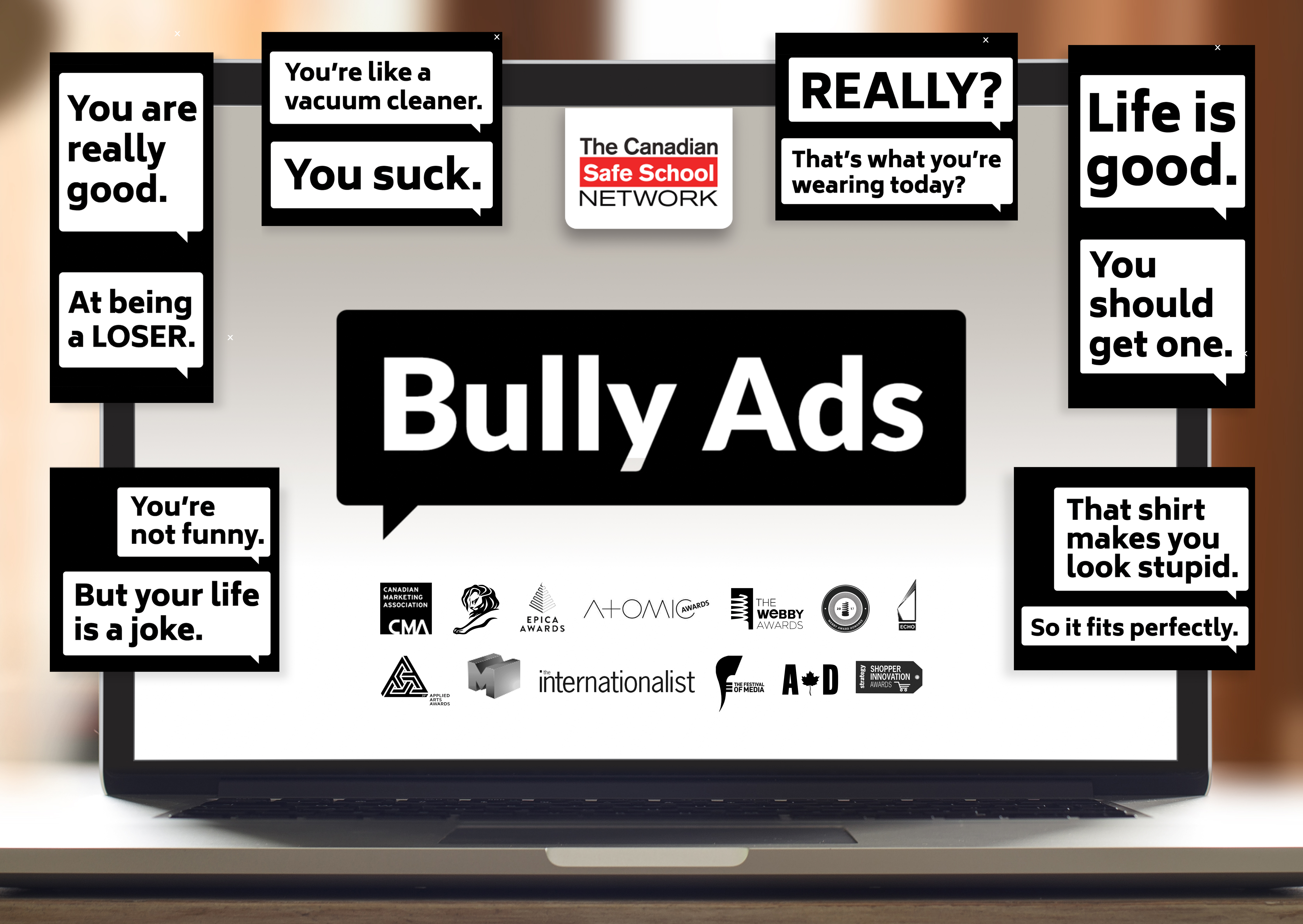2017 Winner
Bully Ads
Canadian Safe School Network
Silver Digital AOY: BIMM
The Goal
Bimm was asked to use the Canadian Safe School Network’s (CSSN) database of influencers, bloggers and media to amplify its anti-bullying message. With a $0 budget, the agency needed to achieve the goals of exceeding the average email open rate of 21%, exceeding the average banner click-through rate of 0.1%, create anti-bullying awareness in Canada and increase donations by 10% from the previous year.
Target
The agency targeted influencers, bloggers and the press from the client-supplied database of fewer than 600. The intent was to use a B2B targeting strategy with the hope that the target would amplify the anti-bullying message.
The Insight and Strategy
The target was already inundated with pitches and anti-bullying campaigns were a dime a dozen, so how could the CSSN draw attention to its cause?
In Canada, one in three kids have experienced bullying. It’s higher than the U.S. and one of the highest in the world. But the real problem with bullying today is there’s no escape. If you’re online, the bullying is there too.
Realizing that retargeting banner ads behave like a cyberbully by following you online, the team used that same retargeting ad strategy to turn online ads into “Bully Ads” for their target so they could feel what it was like to be cyberbullied. This would stand out and catch them off guard. Once the purpose of the “Bully Ads” was revealed, they would share their experience and amplify the CSSN’s cause.
The Plan
The team took an industry first approach. They took mass programmatic ad banners and used them on a one-to-one marketing level. They also circumvented ad banner policies. All banner ads must display their source or brand or company name. But to punk the target, “Bully Ads” could not. Working with Touché and AOL, the banner ads had no brand or resolve. They simply bullied the target with no explanation – for days.
How it worked: The agency sent evites for the CSSN’s anti-bullying event to their target. The email asked each unsuspecting recipient to click on the unique URL for more details. Once they clicked, they were cookied, tracked and had no clue they were about to be cyberbullied. Days later, they became the victims and would see the “Bully Ads” everywhere online. With each passing day, the messages increased in intensity.
Technology and Tools
The team made normal retargeting banner ads more innovative in three ways:
1. Hostile ads berated the user
2. Broke all frequency rules of online media
3. No brand logo on any ads
This effort required daily calls with media to assess, recalibrate and optimize the media buys. The team had to hack the system to ensure their tracking pixels were firing to such a small audience.
User Experience
Once the user was cookied via email click-through, the ads came in two waves. First, they were static ads and the bullying was about physical appearance. For the second wave, ads would flash like they were yelling, and the messaging went deeper. Some headlines were sourced from common examples of online bullying. The “Bully Ads” berated the target for days until all was revealed via the anti-bullying event or through a post-event email, or if they clicked on the banner ad they were taken to a landing page explaining the campaign.
The Results
-51% email open rate, exceeding global average open rate by 143%
-14% banner click-through rate, exceeding global click-through rate by 9,500%
-23 million impressions
-Victims saw as many as 60 “Bully Ads” a day
-Donations increased by 37%, exceeding objective by 370%
-83% of victims shared the work

